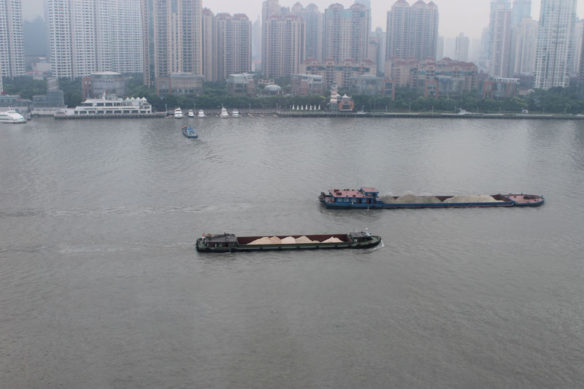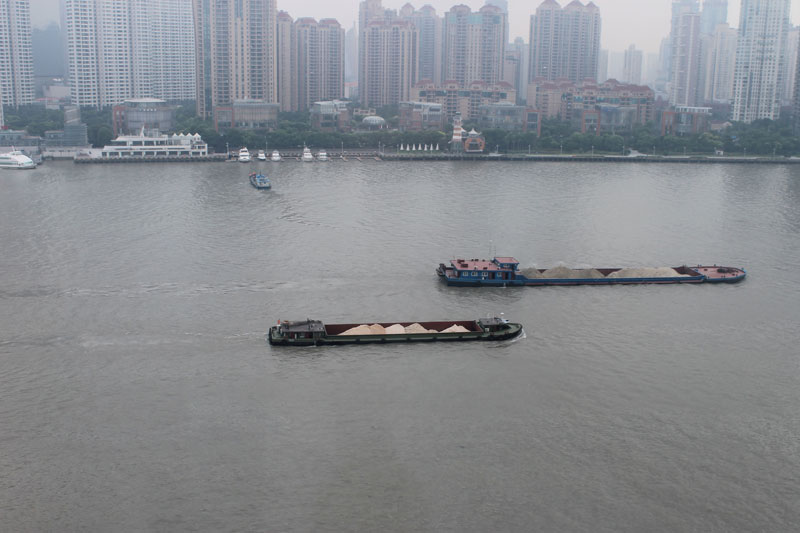
Sand barges. Photograph: © SAF — Coastal Care.
“Sand is the second most consumed natural resource, after water. The construction-building industry is by far the largest consumer of this finite resource, followed by the land reclamation industry. The Sand business has been estimated to be a $70 billion industry, worldwide…” Captions from Award-winning Filmmaker: ©2013 Denis Delestrac
Excerpts;
Asia is growing. Literally. From Malaysia to Dubai, luxury developments are rising on artificial islands and coastlines. Everybody wins – except the local sea life and the fishermen who depend on it…
Read Full Article; Guardian UK (05-02-2018)
The Pearl, Qatar; NASA / Earth Observatory (04-02-2018)
The Pearl-Qatar, a man-made island spanning approximately 1.5 square kilometers (0.6 square miles), extends from the mainland, and once fully completed, The Pearl will create over 32 kilometers of new coastline…
Dubai set to build $1.7b man-made islands Marsa Al Arab by 2020; CNN (05-18-2017)
Hong Kong’s Government Is Spending Billions Taking Land from the Sea; Vice (11-10-2017)
Through expensive, time intensive, and complicated land reclamation projects, Hong Kong is continually extending out and into the water, where there wasn’t land before…
Built on Sand: Singapore and the New State of Risk, Harvard Design Magazine (09-07-2015)
The island’s expansion has been a colossal undertaking. It is not merely a matter of coastal reclamation: Singapore is growing vertically as well as horizontally. This means that the nation’s market needs fine river sand—used for beaches and concrete—as well as coarse sea sand to create new ground…
Cambodia’s villagers lose ground – literally – to Singapore’s expansion; CSM (10-21-2016)
Singapore is buying tens of millions of tons of sand for its land reclamation projects. Their dredging is destroying Cambodia’s coastal mangrove forests, and fishermen’s livelihoods with them. But the villagers are pushing back…
Monaco’s $2.3bn project to expand into Mediterranean Sea; CNN (01-04-2018)
Now construction has begun on a €2 billion ($2.3 billion) project to extend the natural contour of Monaco’s coastline a further 15 acres into the Mediterranean…
Such Quantities of Sand, The Economist (07-27-2015)
Land reclamation has harmed marine life: Survey, The Peninsula Quatar (03-05-2017)
Survey shows that land reclamation has adverse effects on coral reefs and fish quantity has decreased in the last five years in the coastal areas of Doha, Quatar…
What Happens to a Coral Reef When an Island is Built on Top? the Washington Post (07-11-2015)
Seven such coral reefs are being turned into islands, with harbors and landing strips by the Chinese military, and it is destroying a rich ecological network. “It’s the worst thing that has happened to coral reefs in our lifetime…”
Land reclamation plan endangers protected marine area, Malta; Malta Today (10-03-2016)
Sand: the new gold; Les Echos (02-2018)
This is one of the most consumed natural resources in the world. In cambodia, its mining as lead to an environmental catastrophe, while in singapore sand has contributed to 24% of the island’s expansion…
Sand, Rarer Than One Thinks: A UNEP report (GEA-March 2014)
Despite the colossal quantities of sand and gravel being used, our increasing dependence on them and the significant impact that their extraction has on the environment, this issue has been mostly ignored by policy makers and remains largely unknown by the general public.
In March 2014 The United Nations released its first Report about sand mining. “Sand Wars” film documentary by Denis Delestrac – first broadcasted on the european Arte Channel, May 28th, 2013, where it became the highest rated documentary for 2013 – expressly inspired the United Nations Environment Programme (UNEP) to publish this 2014-Global Environmental Alert.









